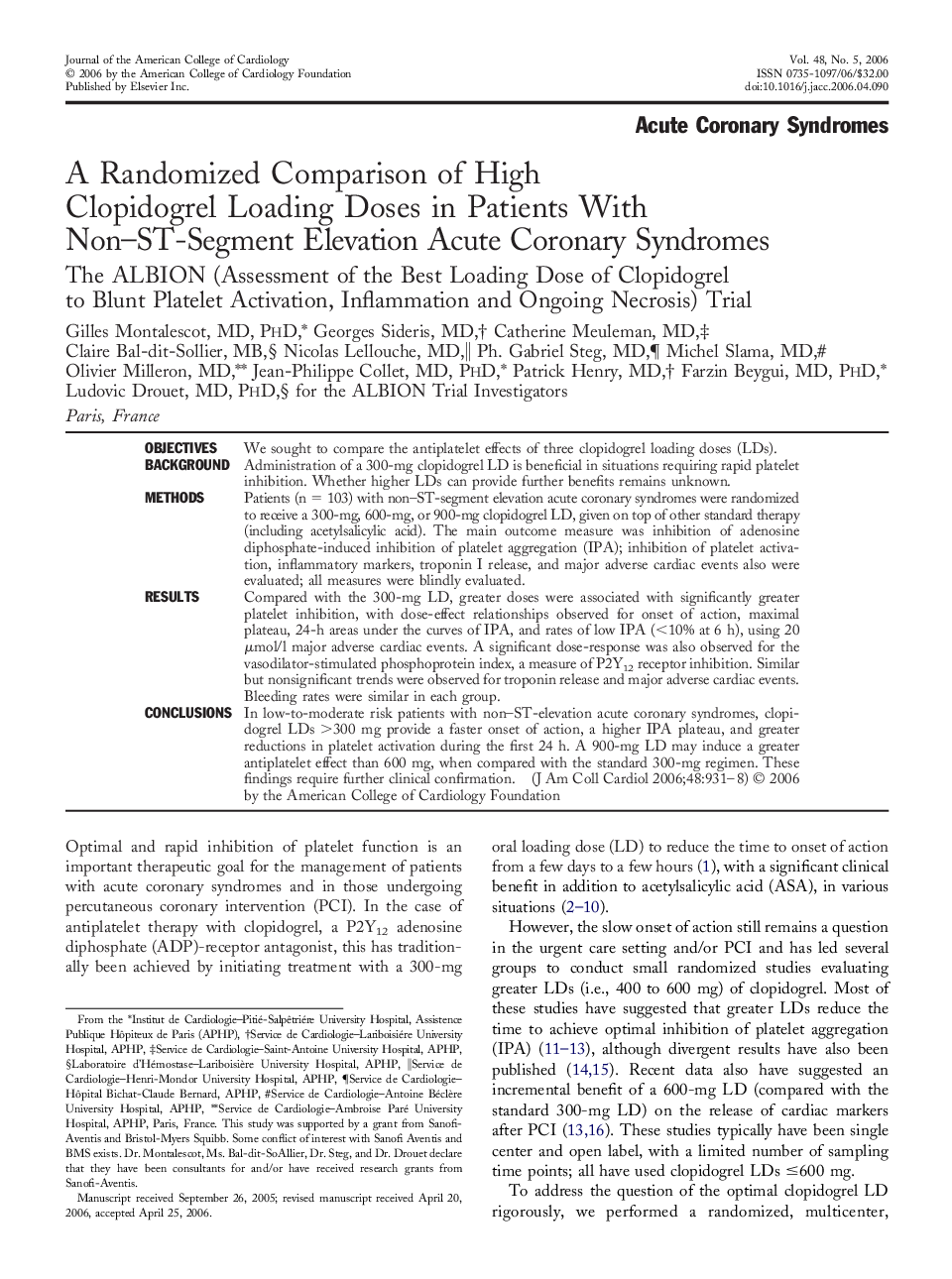| Article ID | Journal | Published Year | Pages | File Type |
|---|---|---|---|---|
| 2953655 | Journal of the American College of Cardiology | 2006 | 8 Pages |
ObjectivesWe sought to compare the antiplatelet effects of three clopidogrel loading doses (LDs).BackgroundAdministration of a 300-mg clopidogrel LD is beneficial in situations requiring rapid platelet inhibition. Whether higher LDs can provide further benefits remains unknown.MethodsPatients (n = 103) with non–ST-segment elevation acute coronary syndromes were randomized to receive a 300-mg, 600-mg, or 900-mg clopidogrel LD, given on top of other standard therapy (including acetylsalicylic acid). The main outcome measure was inhibition of adenosine diphosphate-induced inhibition of platelet aggregation (IPA); inhibition of platelet activation, inflammatory markers, troponin I release, and major adverse cardiac events also were evaluated; all measures were blindly evaluated.ResultsCompared with the 300-mg LD, greater doses were associated with significantly greater platelet inhibition, with dose-effect relationships observed for onset of action, maximal plateau, 24-h areas under the curves of IPA, and rates of low IPA (<10% at 6 h), using 20 μmol/l major adverse cardiac events. A significant dose-response was also observed for the vasodilator-stimulated phosphoprotein index, a measure of P2Y12receptor inhibition. Similar but nonsignificant trends were observed for troponin release and major adverse cardiac events. Bleeding rates were similar in each group.ConclusionsIn low-to-moderate risk patients with non–ST-elevation acute coronary syndromes, clopidogrel LDs >300 mg provide a faster onset of action, a higher IPA plateau, and greater reductions in platelet activation during the first 24 h. A 900-mg LD may induce a greater antiplatelet effect than 600 mg, when compared with the standard 300-mg regimen. These findings require further clinical confirmation.
